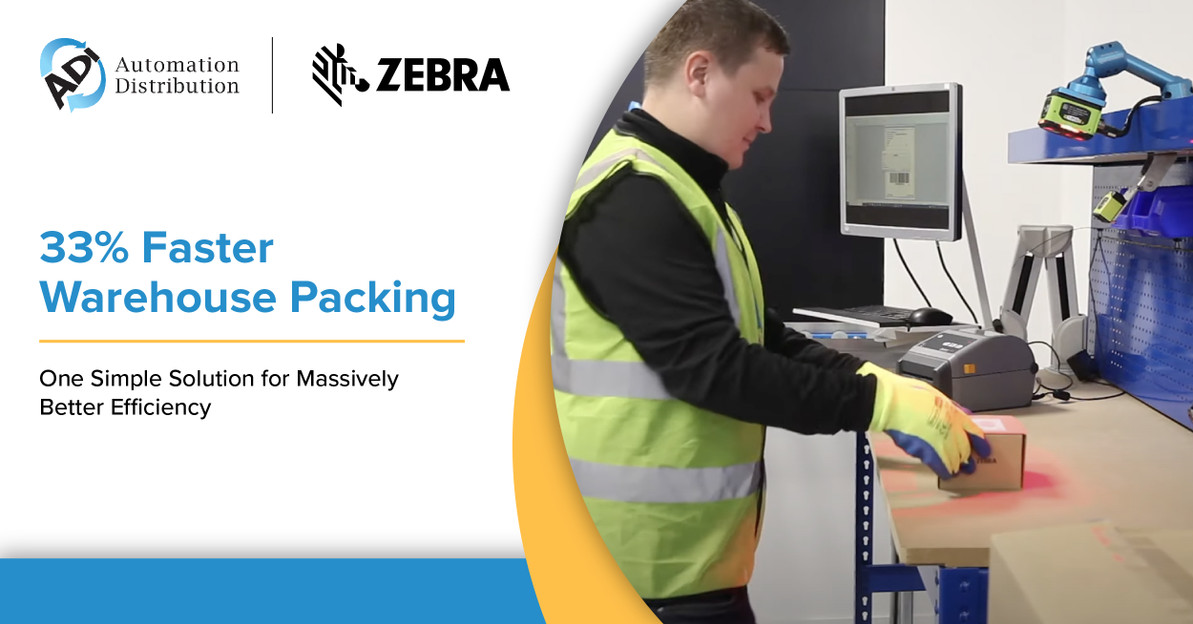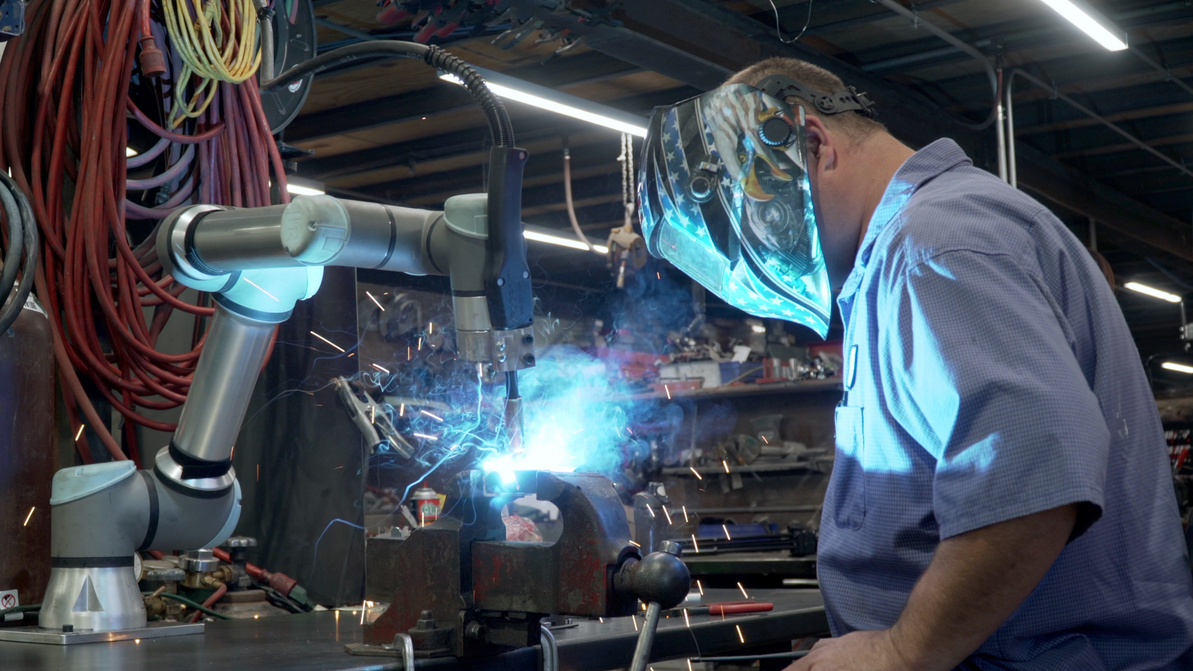How to Speed Up Your Warehouse Packing by 33% with Machine Vision
Packing benches are some of the busiest areas of most warehouses, with thousands of items to pack into boxes and so many labels to print and apply for shipping. But you can easily make your packing operations more efficient by automating key steps in the process.
In fact, by installing machine vision sensors in your packing areas to automate barcode scanning, item verification, order matching, label printing and label checks, you can pack and ship 33% faster and more efficiently.
In this quick overview, we’ll look at how to do it using Zebra machine vision technologies, including how the process works, what results you can expect, and how to explore this game-changing improvement for your warehouse.
Automating Packing-Bench Scanning and Label Printing with Machine Vision
Machine vision technology is used widely in industrial manufacturing and logistics operations to automatically capture and analyze data and images. This capability helps automate and streamline tracking, traceability, workflow processes, visual inspections, and quality checks.
To do this, machine vision sensors use sophisticated built-in imagers to scan 1D/2D barcodes or direct part marks (DPMs), recognize text characters, and capture and analyze images using an array of powerful software tools.
There are countless ways to automate processes and inspections using these capabilities, but, in warehouses, one of the key applications is at busy packing benches or stations. In these use cases, a machine vision sensor is installed as a fixed industrial scanner and visual inspection device above a packing area.
As a packer moves an item or package within range of the sensor, the device automatically scans and decodes its barcode, to uniquely identify it. As the identifying information is captured, it is automatically matched to a packing list or an order for verification. This helps validate that the correct item is going into each box or package, and that the right package is being prepared for shipping.
Additionally, as the item or package is scanned and verified, the machine vision sensor can communicate with your warehouse system to instantly trigger the printing of a corresponding shipping label, so the packer can apply it. The sensor can also capture images of that label, to read and analyze it for presence/absence, correct information, and proper orientation.
Importantly, the sensor is able to capture up to 16 images per trigger event, with each image having its own sophisticated image settings for identification and analysis. This means you can perform multiple scans, inspections and quality checks virtually instantaneously.
As all of this happens, your packer is able to pack and prepare each shipment without having to manually scan barcodes, check items, trigger print jobs, or check labels. The sensor automates all of these tasks, so your packer can stay focused on packing and shipping with hands-free efficiency.
In controlled tests, this has been proven to speed up packing and shipping processes by as much as 33%. Plus, since scanning, verification, label printing, and final checks are all automated with machine accuracy, the possibility for human error is virtually eliminated.
At a time when customers are demanding the fastest possible shipping with no tolerance for mistakes, and labor is at an absolute premium, an automation strategy like this is a no-brainer for many warehouses. Many are now adopting machine vision in their packing areas, on their conveyor lines, and at their dock doors to automate and error-proof their fulfillment processes.
How to Install a Machine Vision System at Your Packing Benches
Fortunately, it’s relatively quick and easy to do install and configure a machine vision system at your packing benches. Zebra’s machine vision sensors are small, compact and rugged, so they fit into the smallest and tightest spaces. They’re easy to mount above your packing areas, using Zebra’s L-mount bracket or other hardware.
Each device is plug-and-play, so you can plug it into the USB port of a workstation, laptop, tablet, or other host device, to provide power and transmit images, data and results to your warehouse systems. Power options include USB-C, 24VDC, or PoE, and aside from using USB, each sensor can also communicate through standard industrial protocols such as Ethernet/IP, CC-Link, Modbus, and PROFINET.
With these simple communication and power options, there is no need for complex cabling or infrastructure, and you can easily set up your specific scanning and visual inspection jobs using Zebra’s easy-to-use Aurora software. The software includes tutorials, wizards and walkthroughs to help guide you through the process, and configuration is super-simple with virtually everything controlled by sliders and radio buttons.
Zebra’s sensors are available with everything you need to get started, including lighting, lensing, and other options to help you capture the right scans and images, at high speeds, at virtually any angle and in virtually any lighting condition. But, in most cases, Zebra’s simplest fixed industrial scanner model is all you need for packing automation.
Learn More and Get Started with Packing-Bench Automation
To learn more about Zebra machine vision and find out how you can start boosting your packing and shipping speed by up to 33%, download our Zebra Ready Solutions Guide and contact our industrial automation experts at Automation Distribution. We’ve helped warehouses and manufacturers deploy automation technologies to increase productivity, efficiency and quality since 1977, and we’d be happy to schedule a free discovery call and consultation at your convenience.
To get started, call us at 1-888-600-3080 or email us now.
Recent Posts
-
Using Scan Tunnels to Track, Sort and Route Warehouse Packages
If you’re using conveyor lines to move products, packages and shipments through your warehouse, the …Apr 17th 2024 -
Embracing Collaboration: How Universal Robots Transformed DeAngelo Marine Exhaust
When the welding robots made their debut at DeAngelo Marine Exhaust, there was a mix of excitem …Apr 11th 2024 -
How to Speed Up Your Warehouse Packing by 33% with Machine Vision
Packing benches are some of the busiest areas of most warehouses, with thousands of items to pack i …Apr 4th 2024



